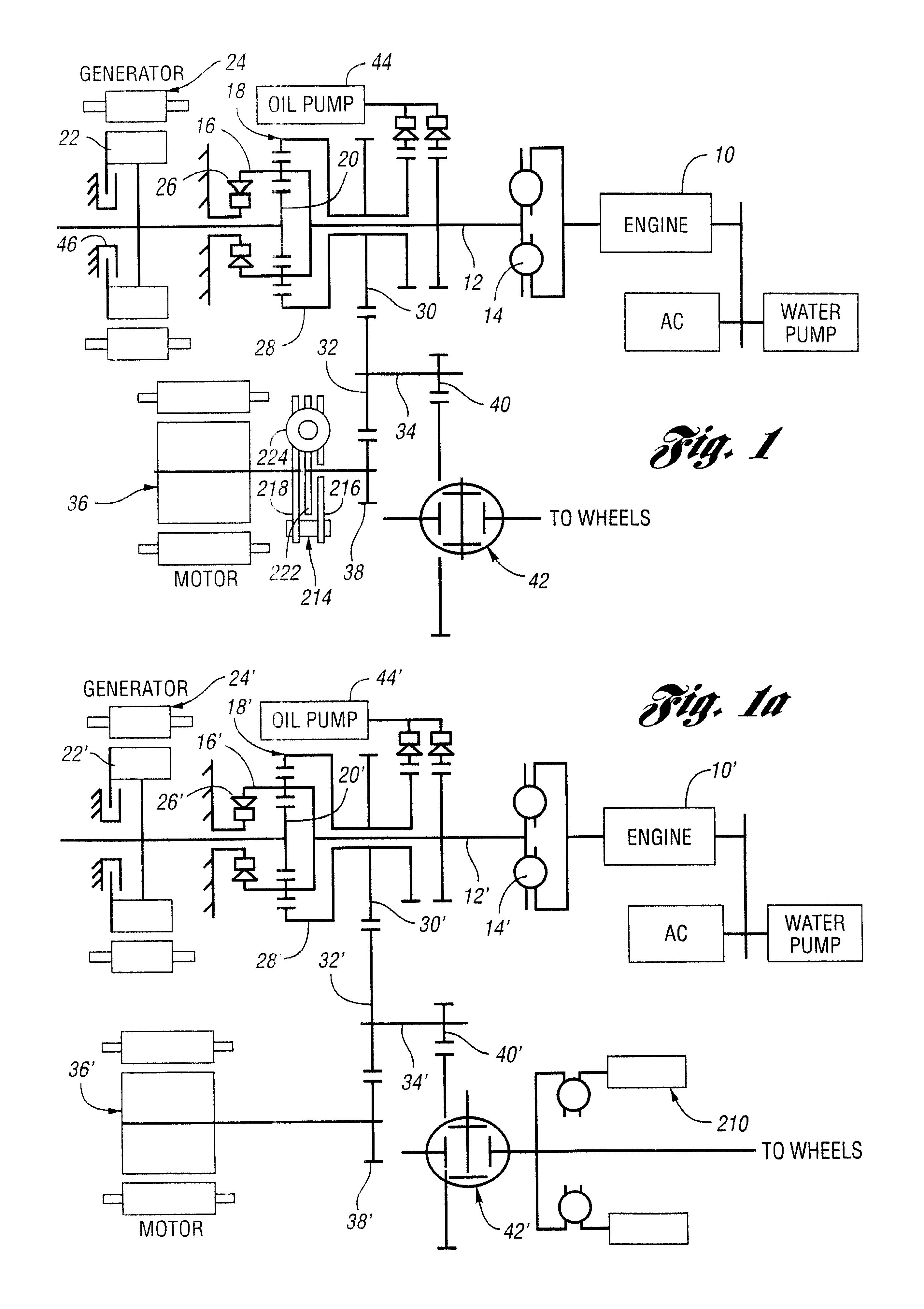Hybrid automotive powertrain with torsional vibration damper
a technology of torsional resonance vibration and damper, which is applied in the direction of battery/cell propulsion, transportation and packaging, etc., can solve the problems of affecting the performance of the automobile, adding extra weight to the automobile, and torsional resonance vibration has always been an inherent problem, so as to reduce vibration
- Summary
- Abstract
- Description
- Claims
- Application Information
AI Technical Summary
Benefits of technology
Problems solved by technology
Method used
Image
Examples
Embodiment Construction
[0046]FIG. 1 shows a gearing arrangement for a front wheel, parallel-series gear system.
[0047]Although several of the gearing arrangements of the various disclosed embodiments of the invention are intended for front wheel drive vehicles, the invention may be used in other configurations as well, including rear wheel drive vehicles and all-wheel drive vehicles.
[0048]In FIG. 1, engine 10 is connected to transmission input shaft 12 through a mechanical spring damper assembly 14. Shaft 12 is connected to the carrier 16 of a planetary gear unit 18. The sun gear 20 of the gear unit 18 is connected to the rotor 22 of an electric generator 24. An overrunning coupling or brake 26 prevents the carrier 16 and the engine from being driven with reverse motion while allowing the generator to deliver torque to the wheels when the engine is turned off.
[0049]The ring gear 28 of planetary gear unit 24 is connected to engine countershaft drive gear 30 and to countershaft gear 32, thus driving the inte...
PUM
 Login to View More
Login to View More Abstract
Description
Claims
Application Information
 Login to View More
Login to View More - R&D
- Intellectual Property
- Life Sciences
- Materials
- Tech Scout
- Unparalleled Data Quality
- Higher Quality Content
- 60% Fewer Hallucinations
Browse by: Latest US Patents, China's latest patents, Technical Efficacy Thesaurus, Application Domain, Technology Topic, Popular Technical Reports.
© 2025 PatSnap. All rights reserved.Legal|Privacy policy|Modern Slavery Act Transparency Statement|Sitemap|About US| Contact US: help@patsnap.com



